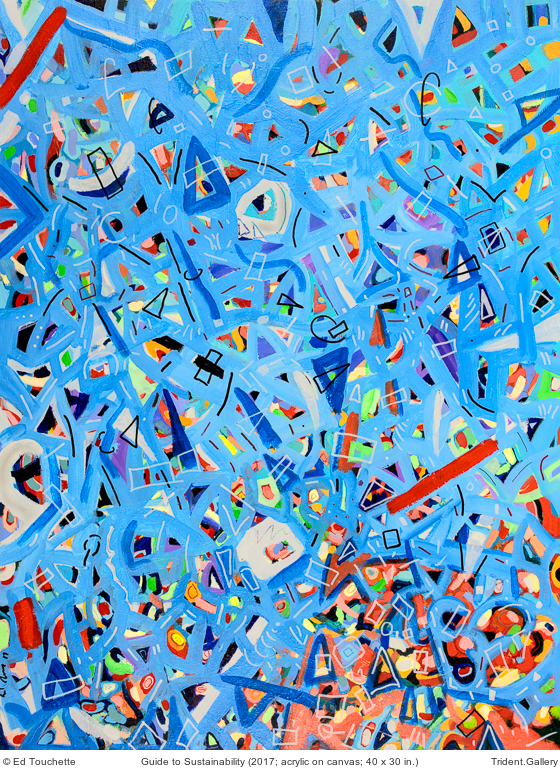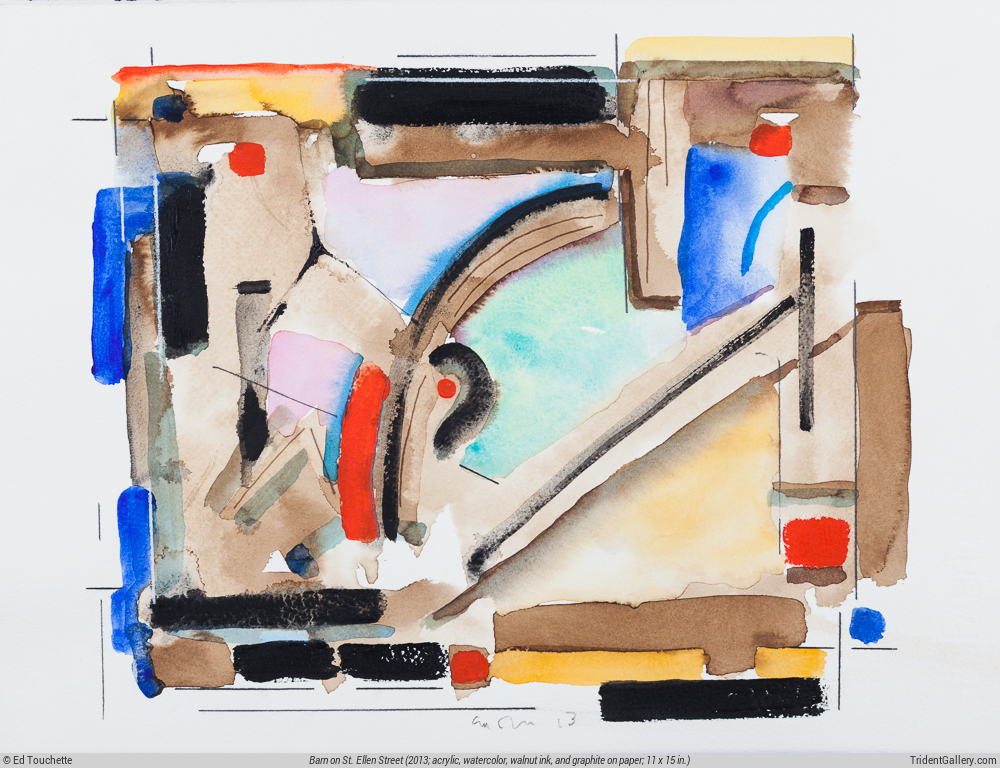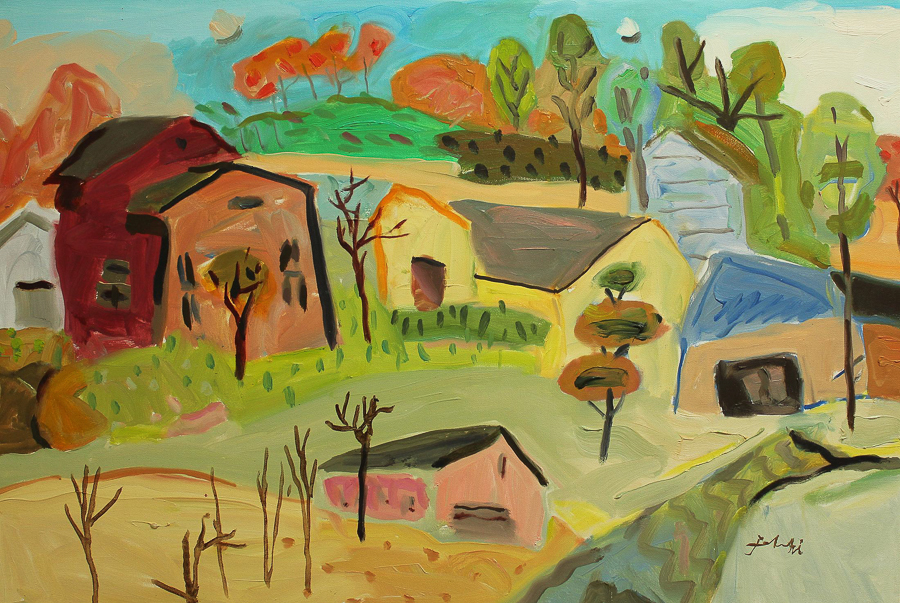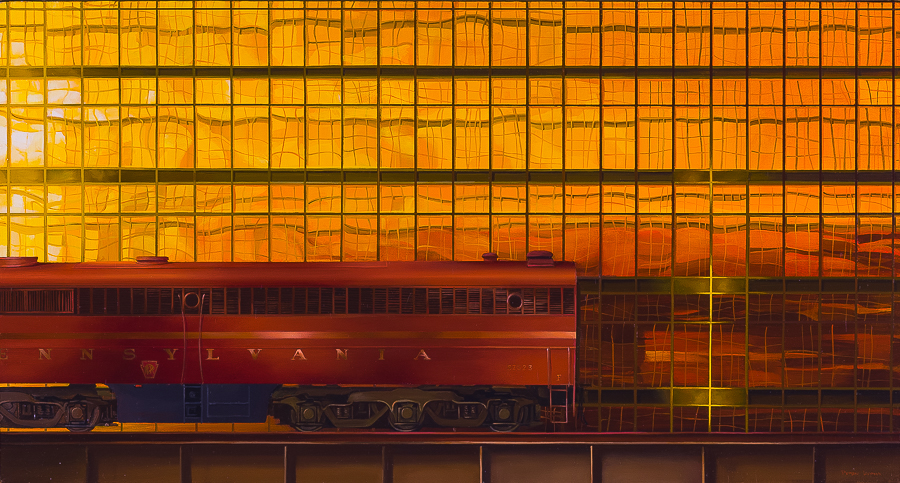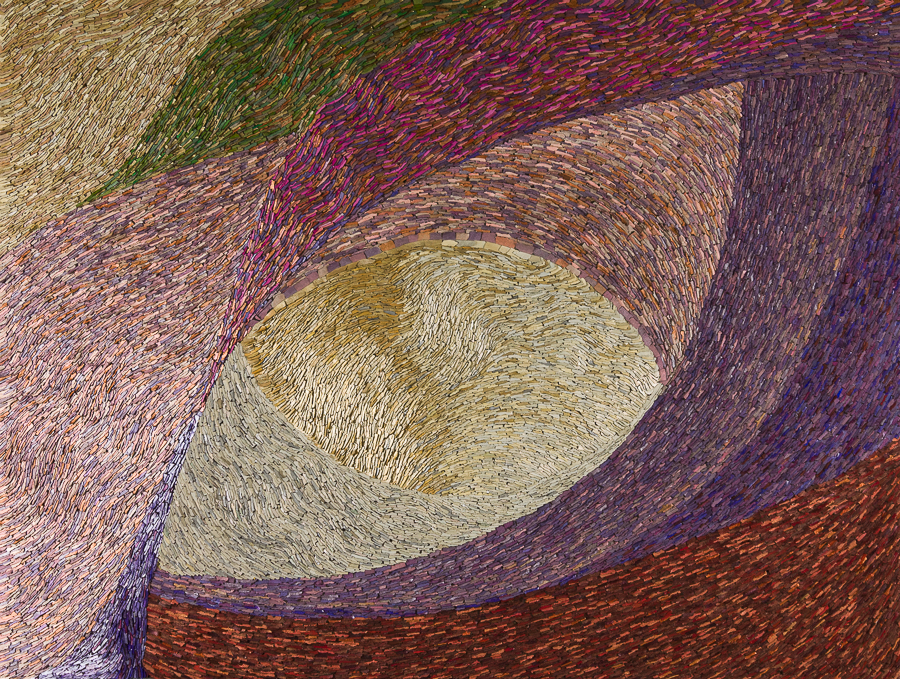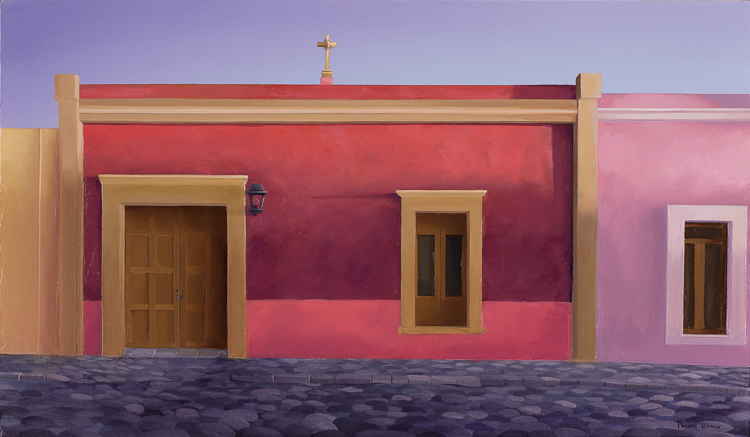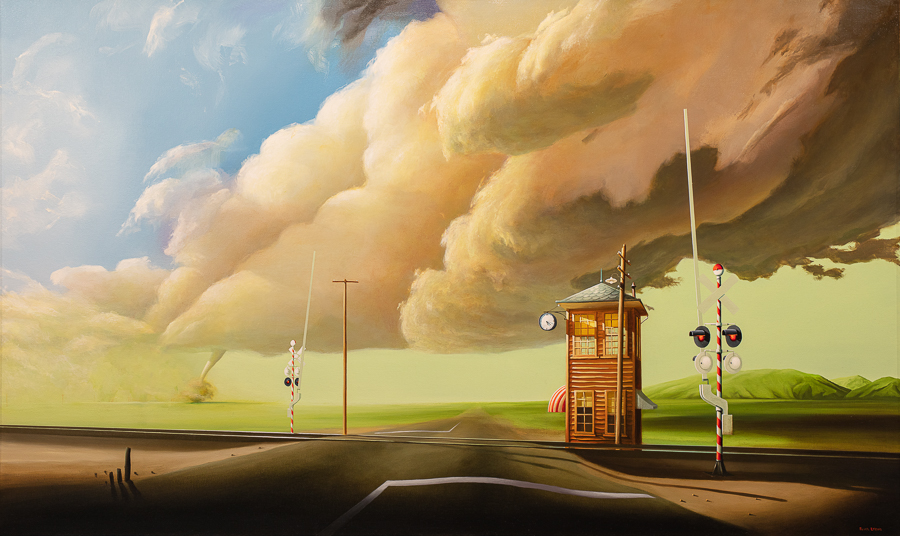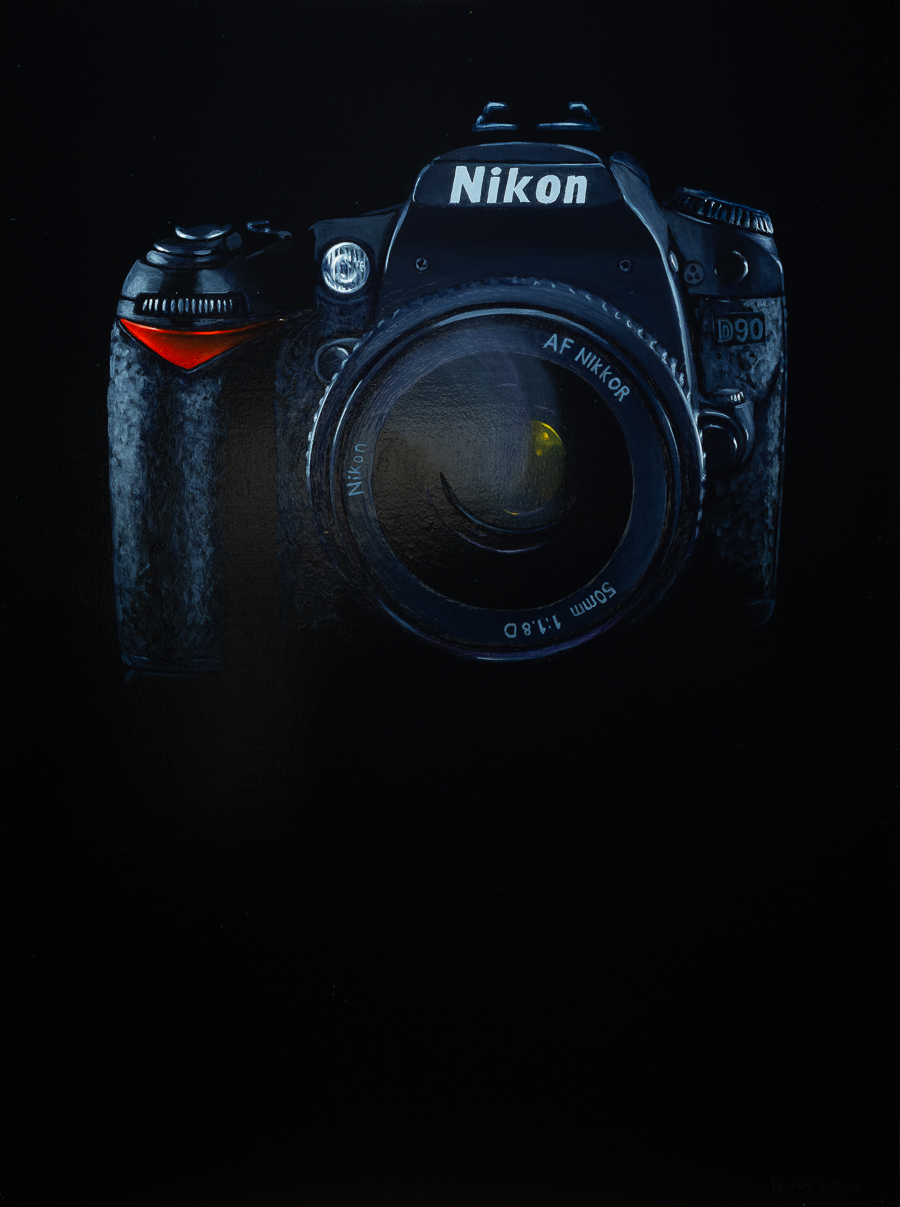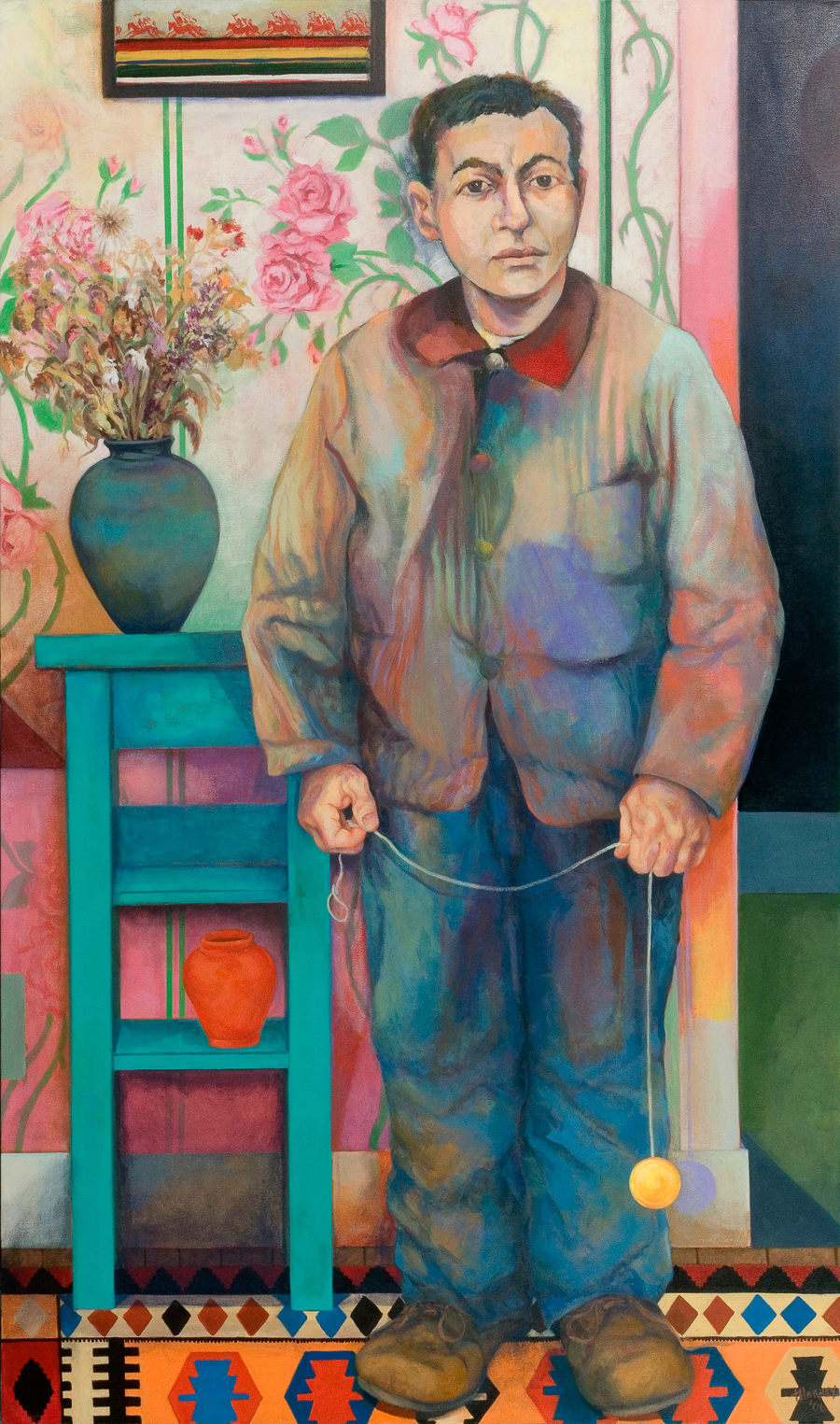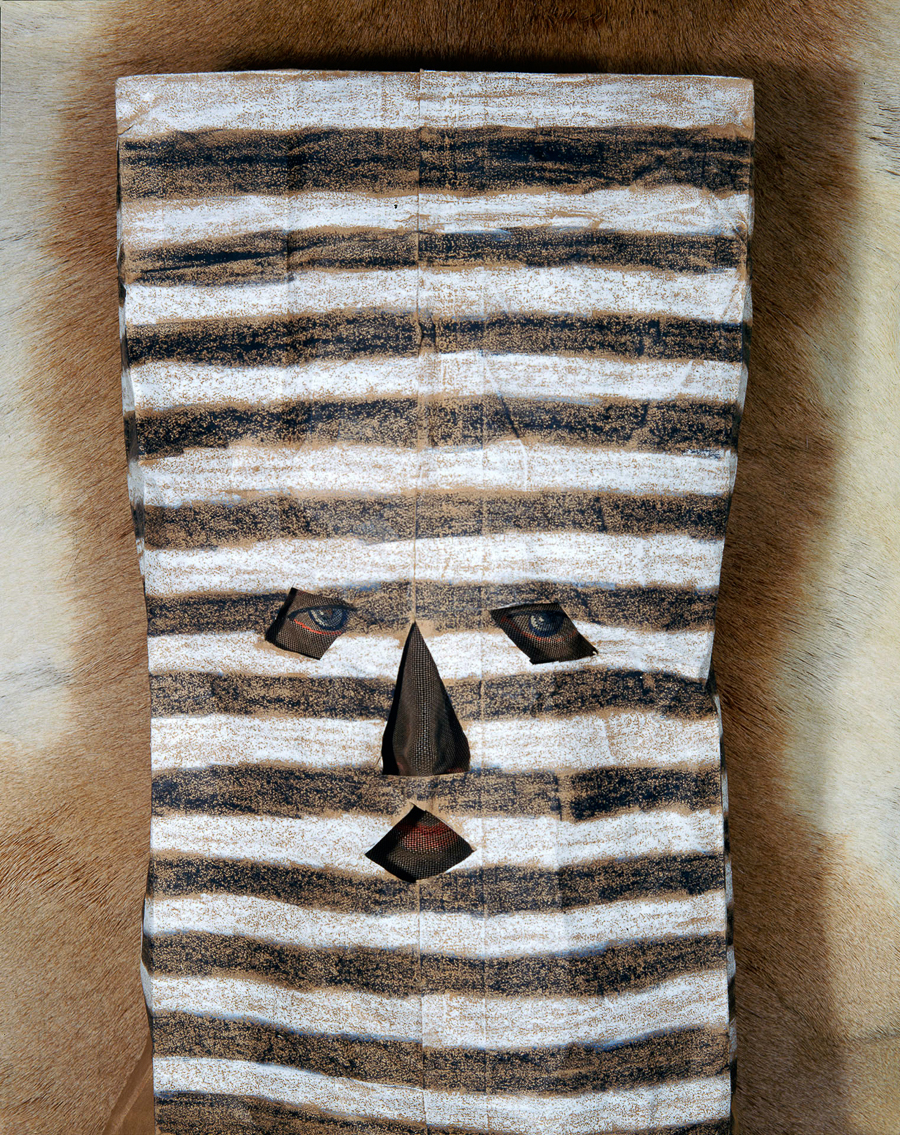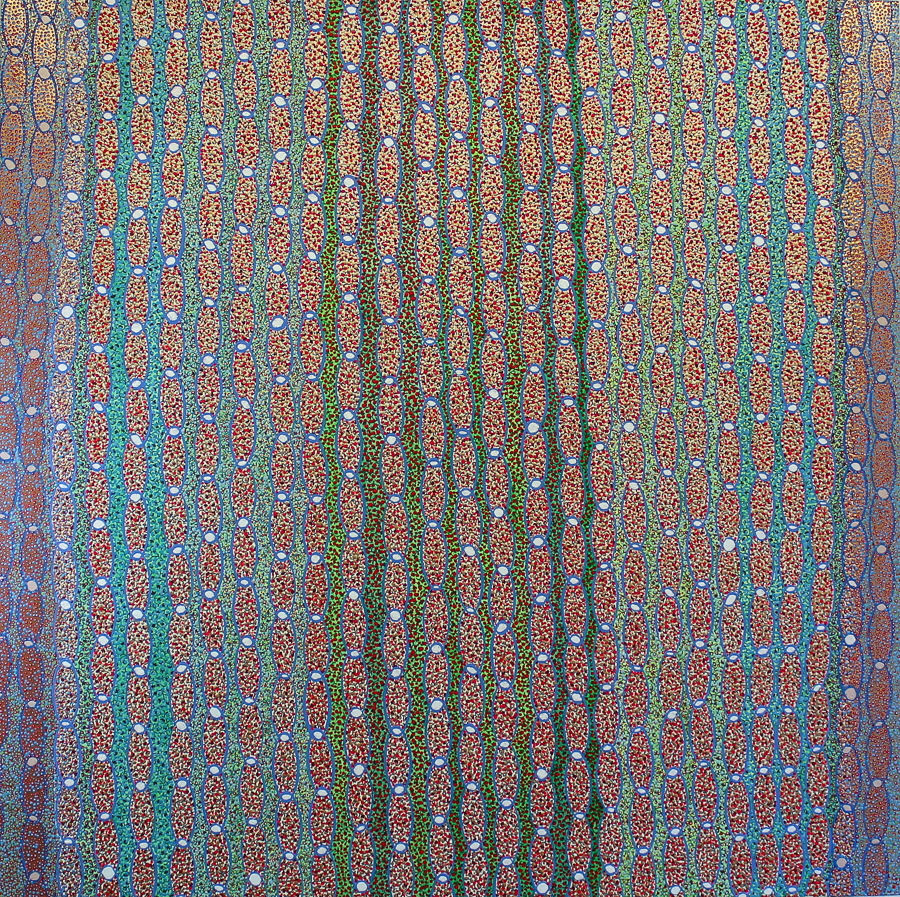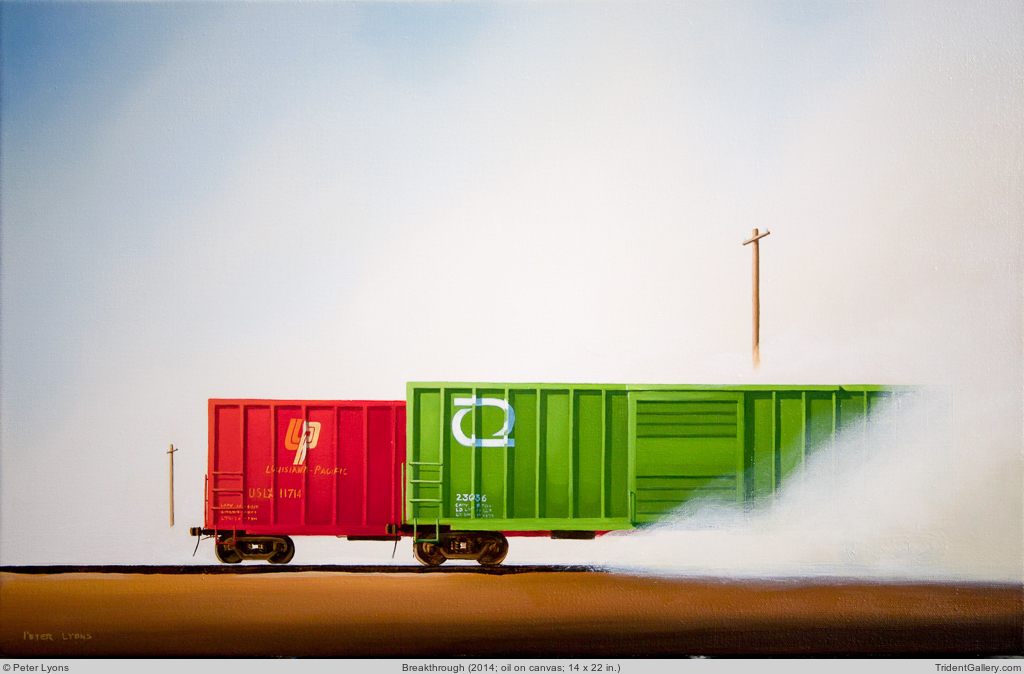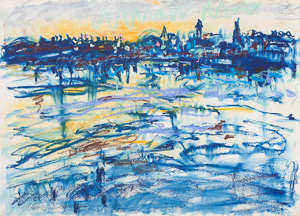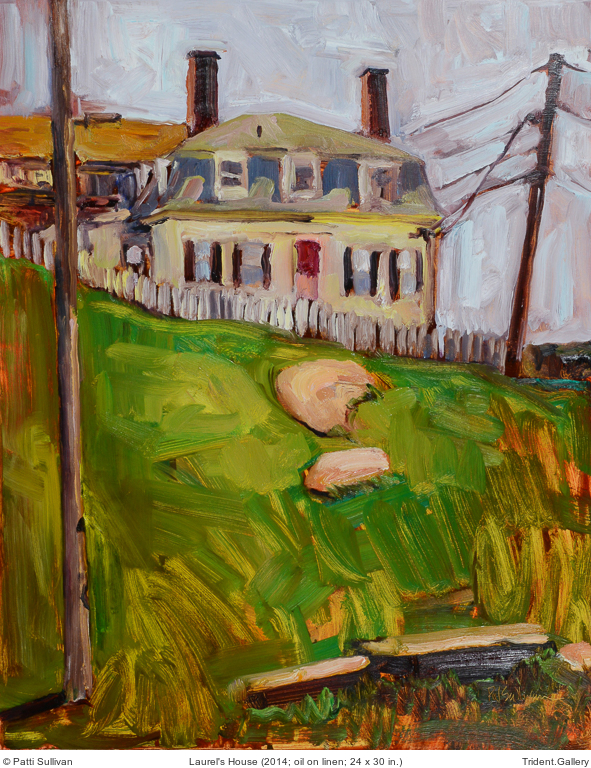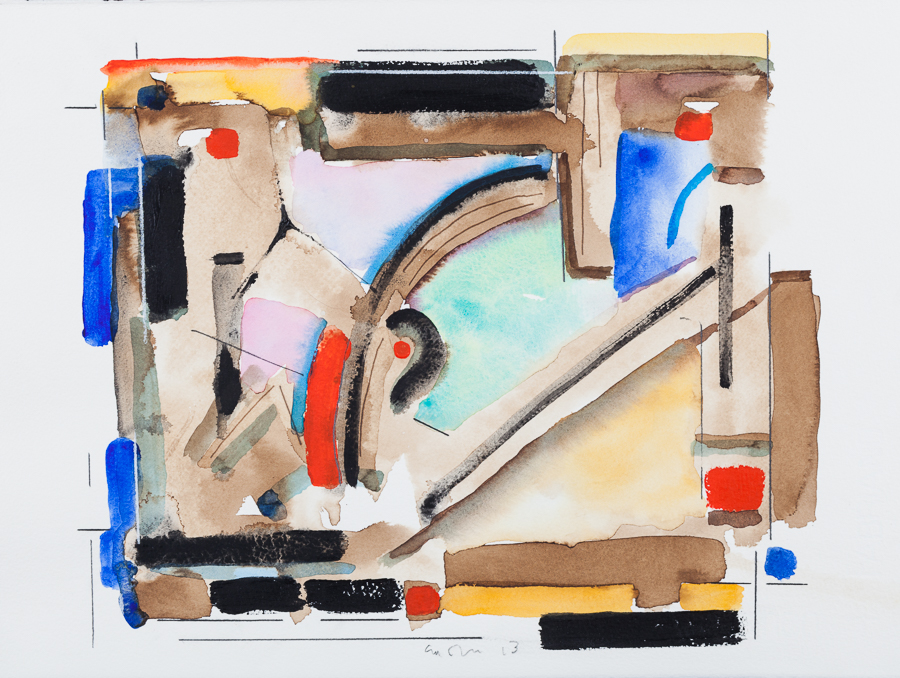Ed Touchette
At Rensselaer Polytechnic Institute in the late 1960s, Ed Touchette was inspired by his reading of Mailer, Melville, and others to leave college and write.
Alex Yatsevich, Professor of Architecture, called Touchette into his office and pointed to a drawing of Paul Klee’s on the wall. Yatsevich, who had worked with Klee and Kandisky at the Bauhaus, told Touchette that if he wanted to write books, that is good, “but I don’t care if you want to bake bread: study architecture!”
Persuaded, Touchette went on to major in architecture; then took up piano and guitar, studying composition and jazz improvisation; then took up painting and drawing, a practice he has continued for over forty years, deeply inspired by enduring passions for literature, architecture, music, and visual art.
. . .
Ed Touchette’s latest paintings are often simplified shapes and colors in an energetic composition, establishing a kinetic tension and visual liveliness. Often, simple painted black lines create remarkable depth and volume, or else cluster into runes. Several closely interwoven frames of reference inform them. To the fore recently have been the novels of Italo Calvino, especially Invisible Cities and Castle of Crossed Destinies.
Inspired by historical accounts of the meetings between the Venetian explorer Marco Polo and the Mongol emperor Kublai Khan in the late 13th century, Calvino’s novel Invisible Cities offers its readers a compendium of brief, poetical descriptions of extraordinarily imaginative, fantastical cities, told in the novel by the explorer to the emperor. A highly sympathetic architectural and literary wonder inspires Touchette’s paintings and becomes explicit in his more complex compositions, which seem like the spontaneous records of a mind marveling at a public monument, a busy construction site, or a bustling city from a high vantage.
At the same time, Touchette’s paintings are also strikingly generative, not recorded impressions but the expression of imaginative forces, optimism, joy, and ideas of order: the assertion of his architectural imagination extends to structure the cosmos.
This duality suggests parallels between these paintings and poetry, which poet Wallace Stevens has described as an interdependence of imagination and reality as equals. Touchette’s paintings, like poetry, are principled constructions of creative imagination. They offer a vision of a chaotic utopia and invite us to participate through aesthetic contemplation and delight.
